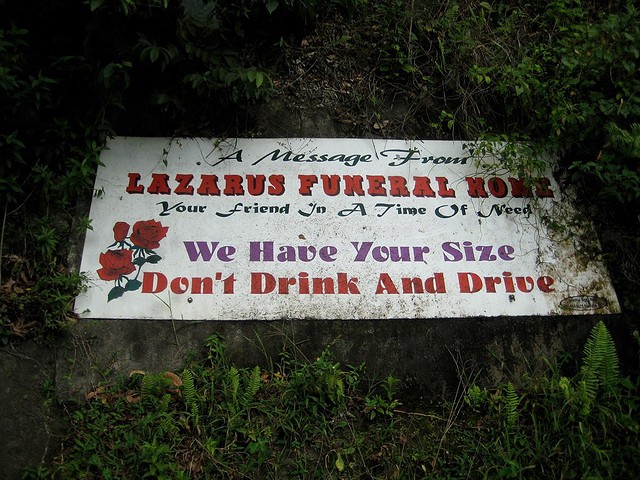An Afternoon at the Death Cafe
by Brendan O’Connor

On a cold and rainy evening, a few days before Christmas, the Rev. Dr. Barbara Simpson hosted the last “Ethical Death Cafe” of the year, at the New York Society for Ethical Culture, on Manhattan’s Upper West Side. Simpson, an ordained interfaith minister, who now works in hospice, but used to work in finance, started hosting the cafes at her home, on the Upper West Side, about two years ago. Quite quickly, there wasn’t enough room to accommodate interest, and Dr. Anne Klaeysen, a Leader of the New York Society for Ethical Culture, invited her to move the cafes to the Society’s West 64th Street location. “I always liked death. I hate to say that, but I’m always interested in everything around death,” Simpson said, laughing, shortly before the most recent cafe. Not everyone is so enthusiastic, however. “It’s a forbidden topic in this country,” she said. “People back away from me when I say, ‘I work in hospice.’ I think they think they’re going to catch it or something.”
The first death cafe was hosted by Bernard Crettaz, a Swiss sociologist and ethnographer, at the Restaurant du Théâtre du Passage, in the town of Neuchâtel, in 2004. The idea was simple: to provide an open, public place for people to gather and discuss mortality, without prescription or judgement. “If your head gets clouded up with all this religious stuff, you can’t think clearly,” Simpson said. “You’re thinking about all this stuff about religion, and ‘Did they do the right thing? Am I doing the right thing?’” She added, “It’s better just to have death. Plain and simple.” According to Jon Underwood, the not-for-profit “social franchise” Impermanence, which he founded, has helped people to organize over twenty-seven hundred death cafes, in thirty-two countries, since 2011.
A little more than a half-dozen people — all women — came to the society’s last death cafe of the year. Sitting in a circle, they introduced themselves, and explained what had brought them there. One woman was a right-to-die activist; another, who, after attempting suicide, in 1974, saw heaven, only to return to earth, was there because she still could not understand why she was alive, and that perhaps a place where death was openly discussed would be where she might figure it out. Another had simply been invited in from the rain as she was walking by.
As a child, in Penkhull, Stoke-on-Trent, a very old, English village atop a hill, Simpson’s mother would take her to a nearby cemetery, where they’d clean Auntie Alice’s granite gravestone with newspaper. “I learned to read reading gravestones,” Simpson said. “Mommy and I would go, and we would walk around the cemetery, and she’d point out and say, ‘What does this say, Barbara?’ Then we’d find a gravestone with a child’s age — eight, or something like that. I was about seven at the time. It would be very exciting! They had angels on them.” Simpson laughed. “We’d sort of imagine the angels coming to life and talking to me.”
One day, when Simpson was very young, she came home from school and found that her grandfather, who lived with her family, and would help her with her spelling tests, was not sitting in his usual armchair, by the fire. “I said, ‘Mommy, Mommy, where’s Granddad?’ And she said, ‘Barbara, he’s resting. He’s upstairs resting.’ Her tone sort of told me not to ask any more questions.” The next day, he still wasn’t in his chair. “I said, ‘Mommy, Mommy, is Granddad still in bed?’ And she said, ‘Yes, yes, he has to rest.’”
Not long after, Simpson was sitting on the stairs, playing with her dolls, while her mother, and the lady next door, Mrs. Hancock, and her Auntie Ida were in the kitchen talking about hats. “These two tall men came in, and went into the lounge area, and I didn’t know then that granddad had died, but they went in to work on his body. My mother was, ‘Oh, what do you think about this hat,’” she recalled. “They loved hats. They would always wear different hats to church and everything. And then Mommy said to me, ‘Granddad died, Barbara.’ She said, ‘Go and play with your dolls.’” Simpson went back to her dolls, and her mother and her friends went back to their hats, but eventually Simpson’s curiosity got the better of her, and she snuck into the room the two tall men had gone into and come out of. There was her grandfather, lying in his coffin, wearing a satin shirt. “I said, ‘Granddad, are you okay?’ He said — I think he really did say this — he said, ‘Oh Barbara, this shirt’s too tight.’ I swear he did talk! I was only seven. I was only seven years old. Then I heard a noise behind me. My mother said, ‘Barbara, you’re not supposed to be in here by yourself. Out you go.’ Then I had to go out and sit on the stairs again.”
When it was time to say goodbye, Simpson’s mother led her and her sister, Julie, into the room where their grandfather lay. “She said, ‘You can touch his hands if you like.’ I touched his hand, and it was cold, like the rocks in the rock garden. It was so cold. My mother said, ‘It’s good luck to touch the body.’ Then I went out,” Simpson said. “I wasn’t afraid of death at all after that.”
Photo by John Unsworth on Flickr
